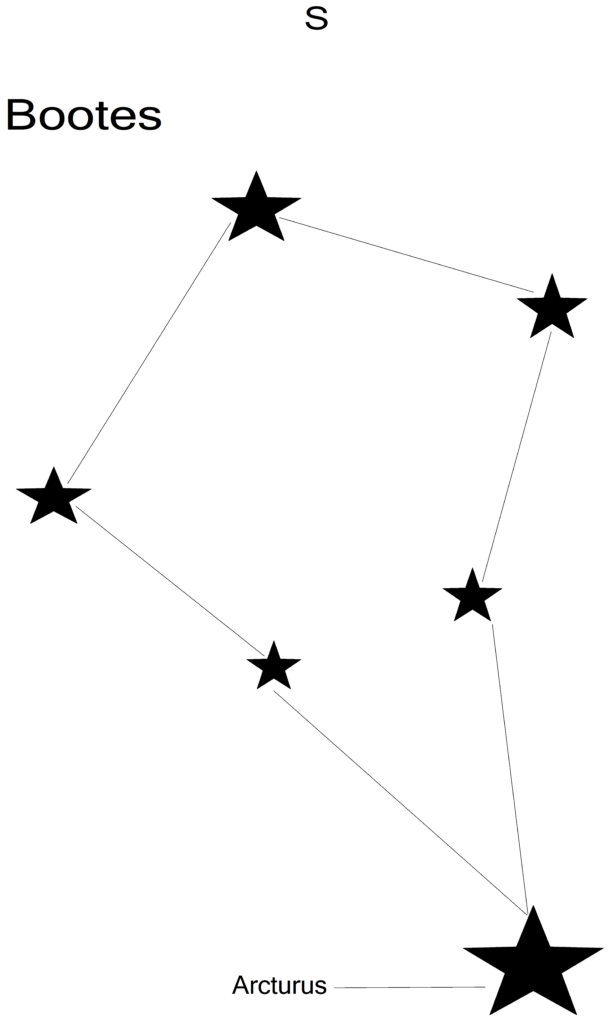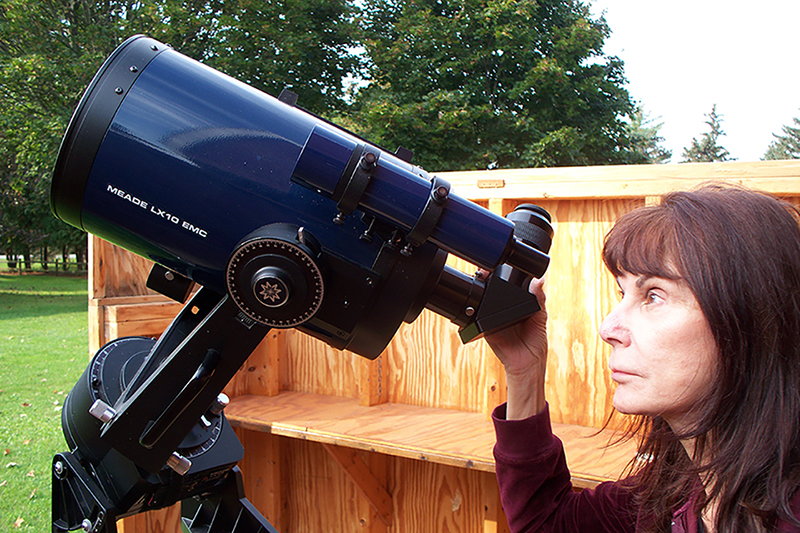Night Sky: June “signposts” orient night sky observers
 For people just beginning to find their way around the night sky, it can help if there are clear “signposts” to point the way. June offers several of these.
For people just beginning to find their way around the night sky, it can help if there are clear “signposts” to point the way. June offers several of these.
This month the brilliant planet Venus is a signpost, as well as an observing target, in the evening sky. The planet can be found 17 degrees (almost 2 fist widths) above the horizon in the western sky at the beginning of the month, brightening from magnitude (mag) -3.9 to -4.1 by the end of June. Look for it every clear night about 30 minutes after sunset.
A crescent moon will join Venus on June 15th and 16th. On the 15th, the moon will lay below the planet, but on the 16th, it will have moved to the planet’s upper left. Binoculars will reveal a lovely star cluster named the Beehive Cluster situated between them. Also on June 19th, Venus will skim the northern boundary of this cluster. As the sky becomes darker on the evenings of the 16th and 19th, these events will be especially beautiful but you will need binoculars to see the star cluster.
Have you ever spotted the illusive planet Mercury in the sky? Mercury is the smallest planet in our solar system and the one closest to the Sun. On June 19th, find bright Venus in the west and then scan the sky toward the northwest to locate Mercury. Mercury will be fairly bright starting out at mag -0.8. Although it will only be 7 degrees (almost 1 fist width) above the horizon, it should be fairly easy to spot naked eye or you could use binoculars if you have a pair.
An almost full moon is the signpost to help find the planets Saturn and Mars this month. On June 27th, the moon will pass almost 2 degrees north of Saturn around midnight, and on the 30th, it will pass 5 degrees north of Mars at 10:00 P.M.
For the entire month Jupiter, the largest planet in our solar system, should be easy to spot on its own, shining brightly at mag -2.5 high in the south when the sky is fully dark.
Remember that the planets will look just like stars but won’t travel across the sky in the same fashion. As ancient Greek astronomers noticed when they studied the sky, certain “stars” seemed to move among the other stars, not maintaining a specific pattern in relation to the other “fixed” stars. They were given the name “asteres planetai” or “wandering stars”. The speed with which some planets change their positions among the stars can be most easily seen with the planets closest to the Sun, Mercury and Venus, because they travel around the Sun at a much faster rate than the outer planets, those farthest away.
A signpost that will help you find the constellation Bootes, the Herdsman, is the Big Dipper. Bootes is anchored by a bright red giant star named Arcturus and will be high in the southern sky in June. To locate it, face north and find the Big Dipper in the northwestern sky. Follow the curve of the handle of the dipper and draw an imaginary line overhead which will lead you to Arcturus. Arcturus has a distinctly orange hue compared to the other stars. Remember the phrase, “arc to Arcturus”. The rest of the stars that comprise Bootes are fainter but together they resemble a huge kite in the sky.
The summer solstice arrives at 6:07 A.M. on June 21st. On this the official first day of summer for the Northern Hemisphere, we’ll experience the most daylight hours of the entire year – 15 hours, 22 minutes, 51 seconds. The summer solstice was important to many ancient cultures and is still celebrated today by many people around the world.
_____________________________
Magnitude measures the apparent brightness of a celestial object and is expressed by a decimal. The larger the number, the dimmer the object.
Sun: -26.7
Full Moon: -12.6
Venus at its brightest: -4.4
Bright star: 0.0
Arcturus: -0.1
Dimmest star visible with the unaided eye: 6.0
How to measure degrees in the sky: Hold your arm straight out:
– make a fist, with thumb on top = 10 degrees
(ex: 30 degrees is 3 fist widths)
– hold up three fingers = 5 degrees
___________________________
Strasenburgh Planetarium
Strasenburgh Planetarium in Rochester has public observing every clear Saturday night. Members of the Astronomy Section of the Rochester Academy of Science will open the two telescopes on the roof of the planetarium. This free event takes place from dark to 10:30 PM. You will need to climb 60 steps to the telescope deck. The entrance is just to the right of the back door of the planetarium. Call the planetarium after 7:30 PM at 585-697-1945 to confirm the telescope will be open that night. If it’s cloudy, observing will be cancelled. http://www.rmsc.org/strasenburghplanetarium
____________________________
Dee Sharples is an amateur astronomer who enjoys observing planets, star clusters and the Moon through her telescope. She is a member of ASRAS (Astronomy Section of the Rochester Academy of Science) and records “Dee’s Sky This Month”, describing what can be seen in the sky, on the ASRAS website at rochesterastronomy.org. Watch for her monthly Owl Light News feature to learn more about the night sky.
